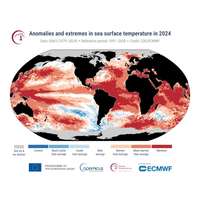
2024 was Hottest Year on Record
of extreme air and sea surface temperatures; while other factors, such as the El Niño Southern Oscillation (ENSO), also contributed to the unusual temperatures observed during the year.This year the following organizations involved in global climate monitoring – ECMWF, NASA, NOAA, the UK Met Office, Berkeley Earth and the World Meteorological Organisation (WMO), have made a concerted effort to coordinate the release of their data, highlighting the exceptional conditions experienced during 2024.Carlo Buontempo, Director of the Copernicus Climate Change Service, said: "All of the internationall
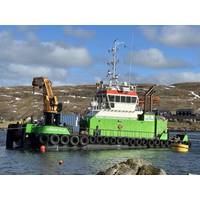
Green Marine UK, NOC Team on Gliders
Green Marine UK has deployed a series of underwater gliders in the North Sea to support a data-collecting exercise led by the UK’s National Oceanography Centre (NOC) and the Met Office.Operating for six-month intervals, the gliders will survey ocean depths approaching 200m for a three-year period. The project aims to improve the collection and distribution of data supporting both weather and ocean forecasts.A range of measurements including salinity and temperature will be delivered to the Met Office in near real-time. It forms part of a wider program to increase the amount of observational data

Dr. Siddorn Tapped to Transform NOC Research Strategy
NOC in 2020 as Associate Director of Digital Ocean. He has championed the embedding of digital approaches to furthering science, including through the use of digital twins. He succeeds Professor Angela Hatton who is leaving the NOC after over six years in the role.Prior to NOC, Dr. Siddorn was at the Met Office where he was Head of the Ocean Forecasting R&D Department (OFRD) group and co-chair of the National Partnership for Ocean Prediction (NPOP). As Head of OFRD he had responsibility for developing models and satellite analyses for weather and climate applications. His personal research was on
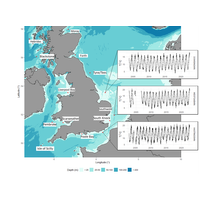
New WaveNet Data Shows Record UK Sea Temperatures
water contains less oxygen, threatening marine habitats and larger fish species.It is projected that U.K. sea water temperatures will continue to rise over the coming century, with models suggesting an increase of between 0.25°C and 0.4°C per decade. The WaveNet data, which is incorporated into Met Office meteorological models, will help forecasters, local authorities, and scientists to better understand the risks and impacts of climate change on the marine environment and coastal communities
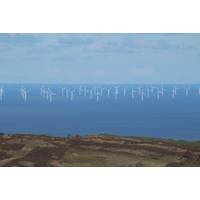
CGG Joins UK Research Assessing Ecosystem Impact of Offshore Wind Farms
and the conservation of species around offshore wind farms while also supporting wind farm developers to design long-term environmental monitoring strategies. The project will utilize data supplied by Mona Offshore Wind Ltd. (a joint venture between EnBW and BP), ENI, Ørsted, RWE, and The Met Office, among others. The £2M, four-year ECOWind-ACCELERATE project is funded by the UK Natural Environment Research Council (NERC) and The Crown Estate, with support from the Department for Environment, Food and Rural Affairs (Defra) as part of the ECOWind program.CGG will provide high-performance
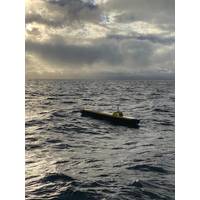
AutoNaut Completes a 16-week, 4,000-mile Mission on the Atlantic continental shelf break
develop the science program. Other stakeholders became associated in the data collection program as the project developed and the route changed. These included the Irish Marine Institute, Galway Marine Institute of Technology, OSNAP and iFADO partners, NOC, CEFAS, University of Exeter, and the UK Met Office. The data collected are made freely available to all partners.The sensor fit for this deployment was loaned to AutoNaut, for which we are grateful. It comprised:Nortek Signature500 ADCP, fitted through the hullSeiche PAM, fitted to a small fin below the hull rather than as a towed arrayAande

UK Met Office Selects Sonardyne Acoustic Releases for Mooring Weather Buoys
Acoustic release transponders from Sonardyne were chosen by the UK’s Met Office to secure its network of moored buoy Marine Automatic Weather Stations (MAWS) in the North Sea and Atlantic Ocean.Sonardyne’s RT 6s and deck topside command units will be used to support deployment and retrieval of the MAWS buoys from theirlocations as far north as the Faroe-Shetland Channel and down to the southwestern approaches and the English Channel in the south.Because many of the buoys are moored in more harsh North Atlantic waters, they have to be designed to withstand extreme conditions, includingsignifi
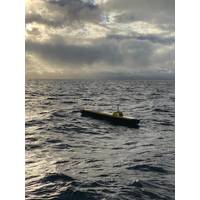
Case Study: Autonaut Put to the Test
develop the science program. Other stakeholders became associated in the data collection program as the project developed and the route changed. These included the Irish Marine Institute, Galway Marine Institute of Technology, OSNAP and iFADO partners, NOC, CEFAS, University of Exeter, and the UK Met Office. The data collected are made freely available to all partners.The sensor fit for this deployment was loaned to AutoNaut, for which we are grateful. It comprised:Nortek Signature500 ADCP, fitted through the hullSeiche PAM, fitted to a small fin below the hull rather than as a towed arrayAande

UK Researchers Collaborate on Climate Solutions
UK climate science organizations announced a plan to form a new national alliance focused on climate solutions for society. Seven Natural Environment Research Council (NERC) supported centers and the Met Office will work together as the new UK National Climate Science Partnership (UKNCSP) to respond to threats posed by a rapidly changing climate.The solutions-focused approach is aimed to support the UK Government in developing and evaluating solutions to the challenges of mitigating and adapting to climate change. The partnership will also work with the public and private sectors to ensure decision

 February 2025
February 2025





